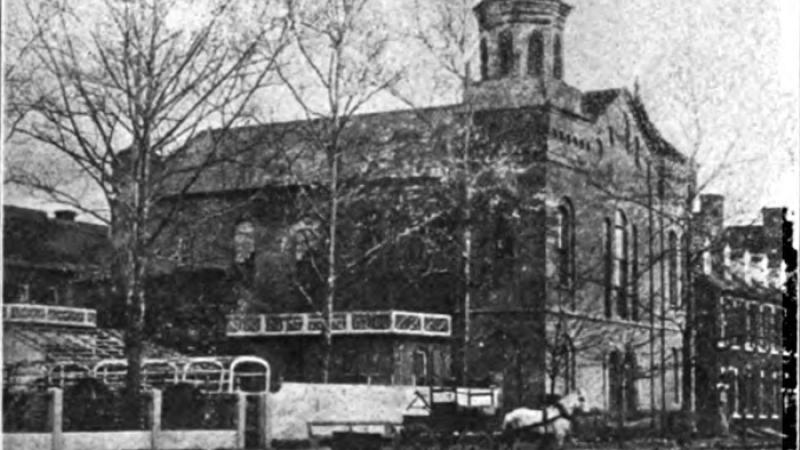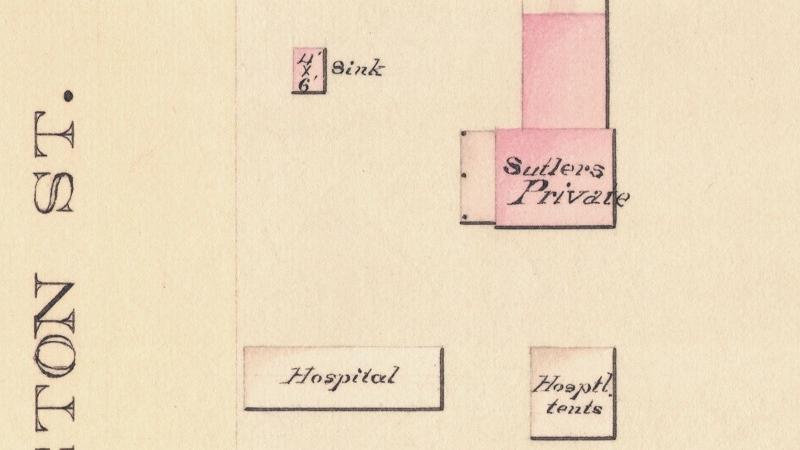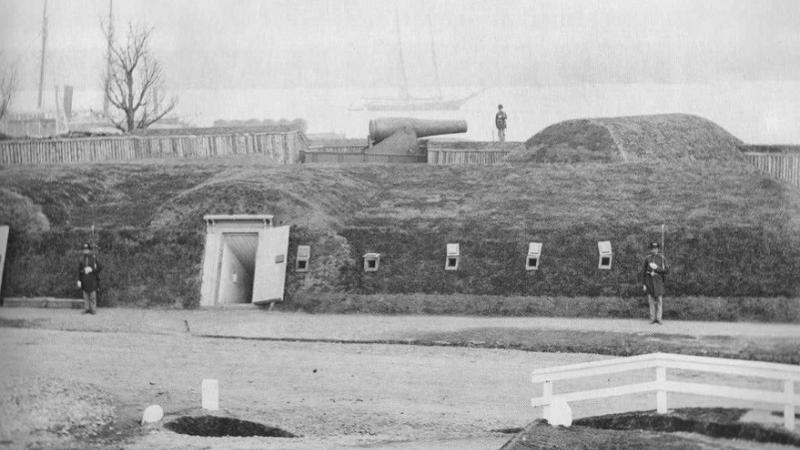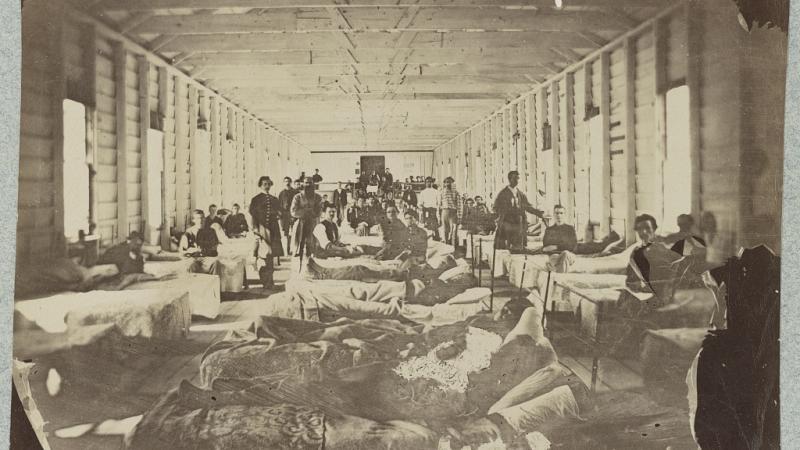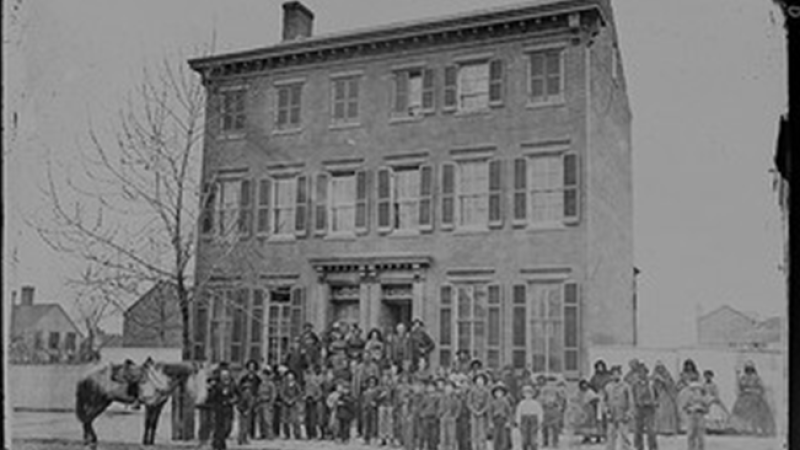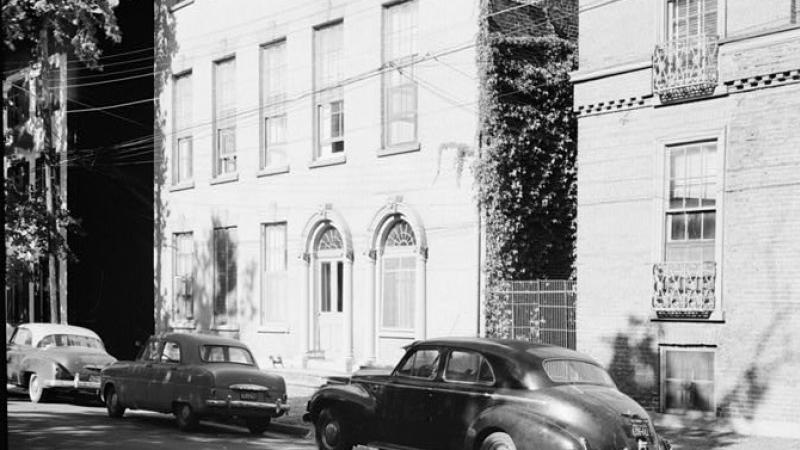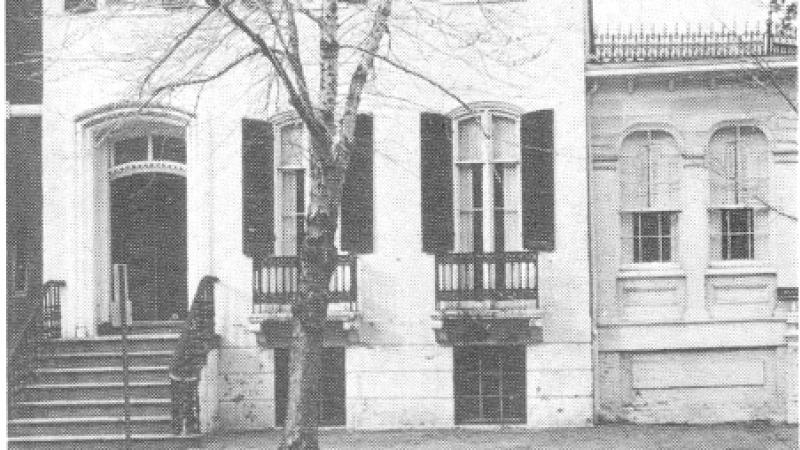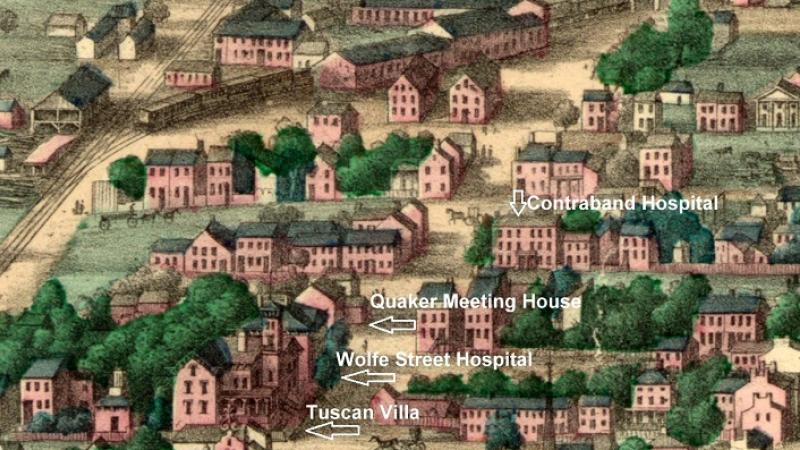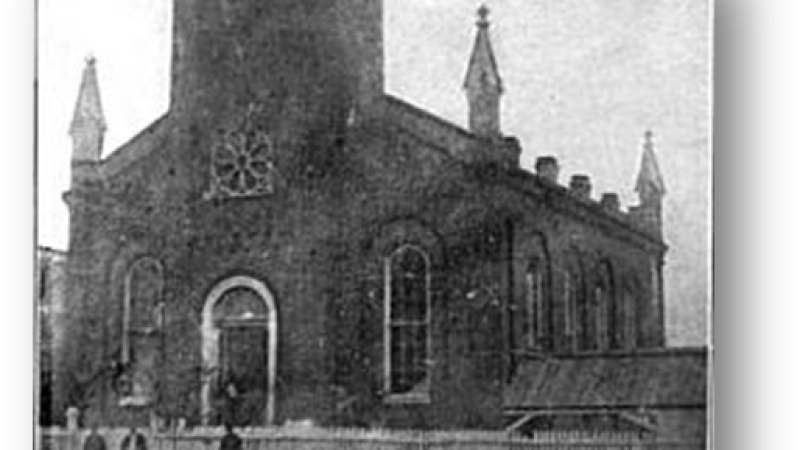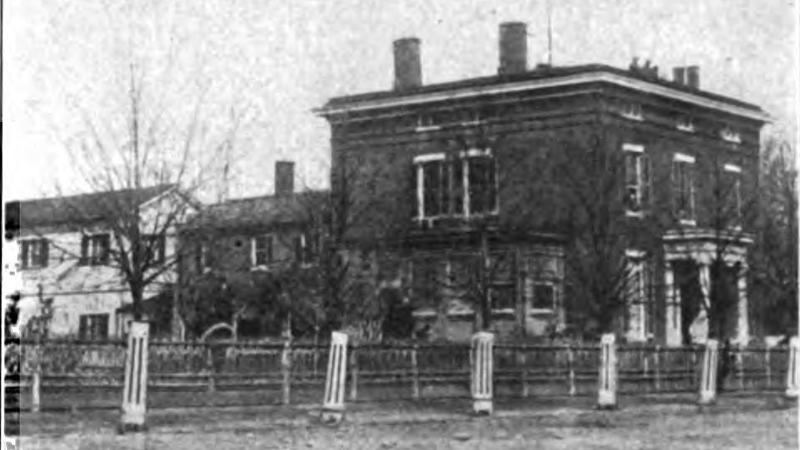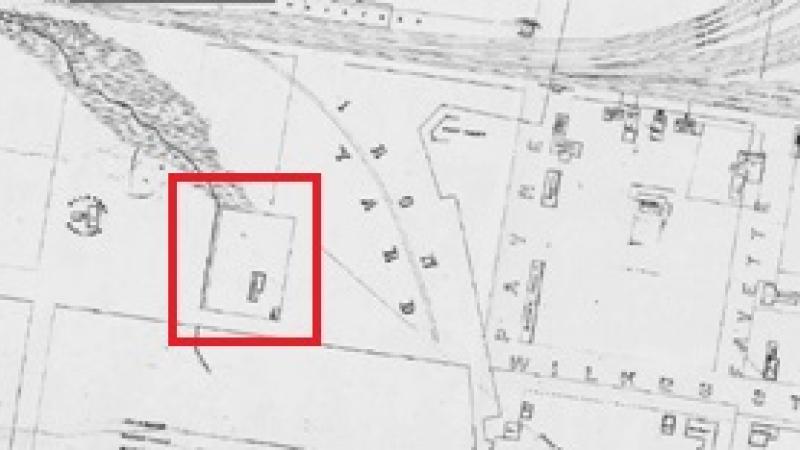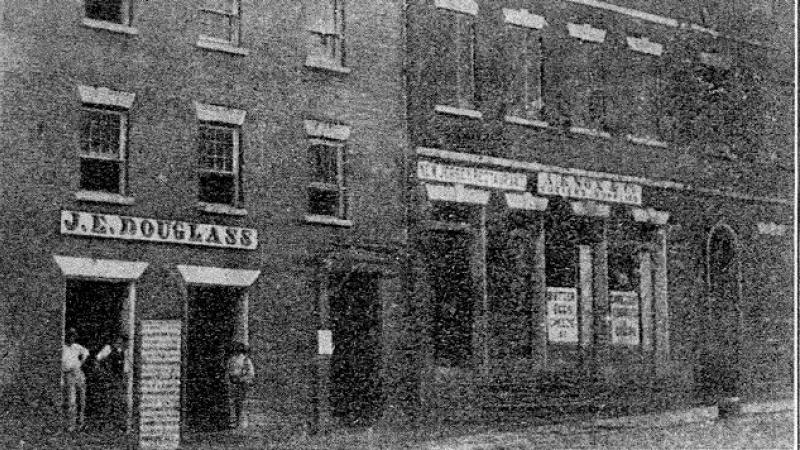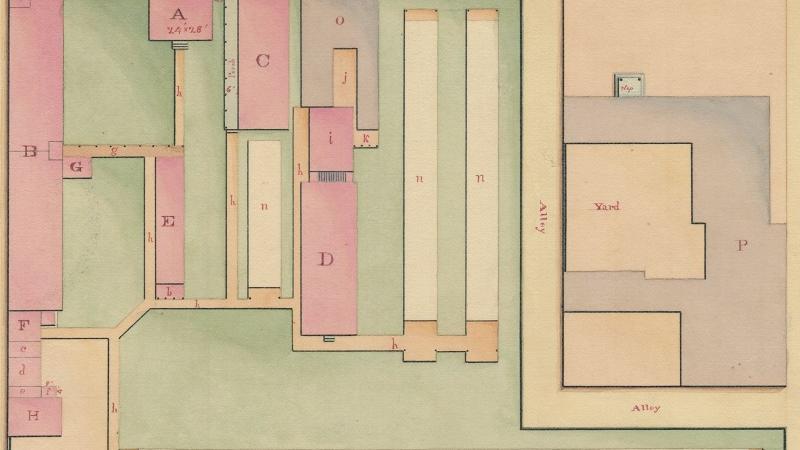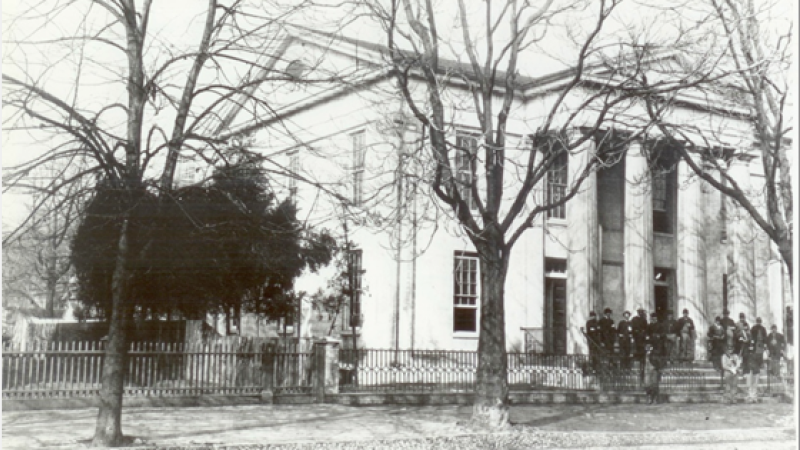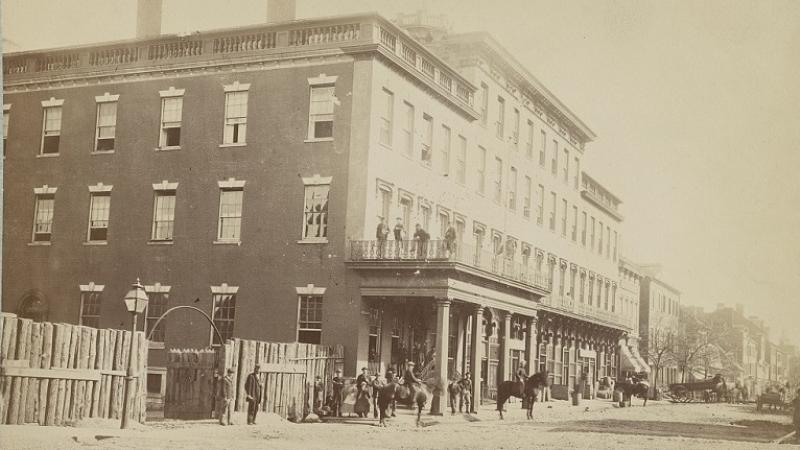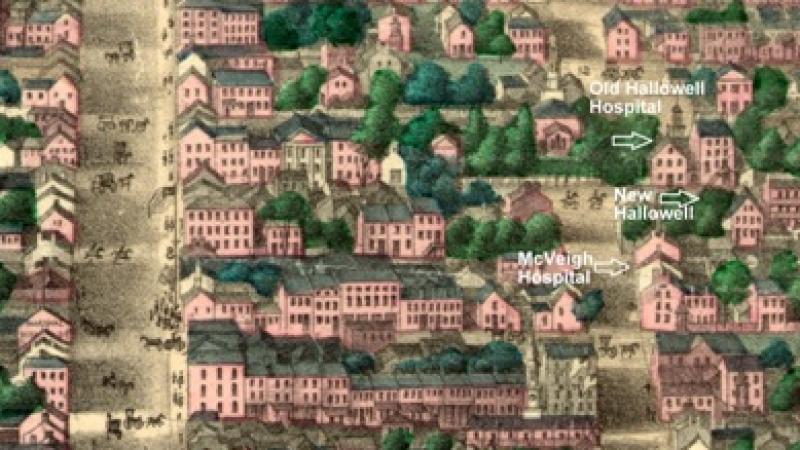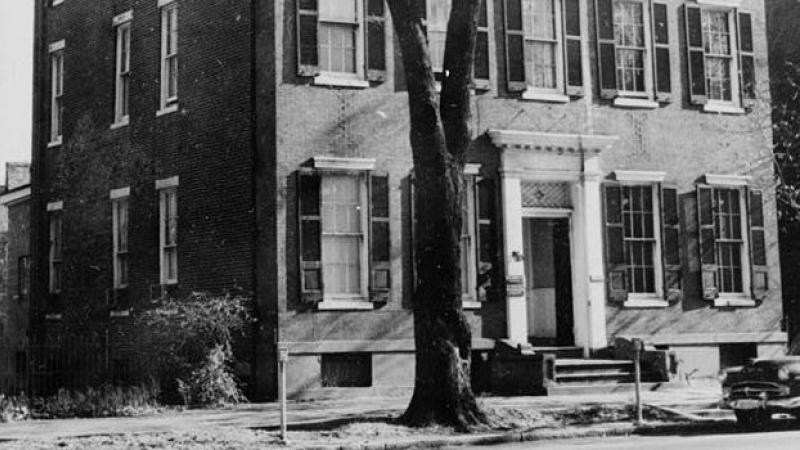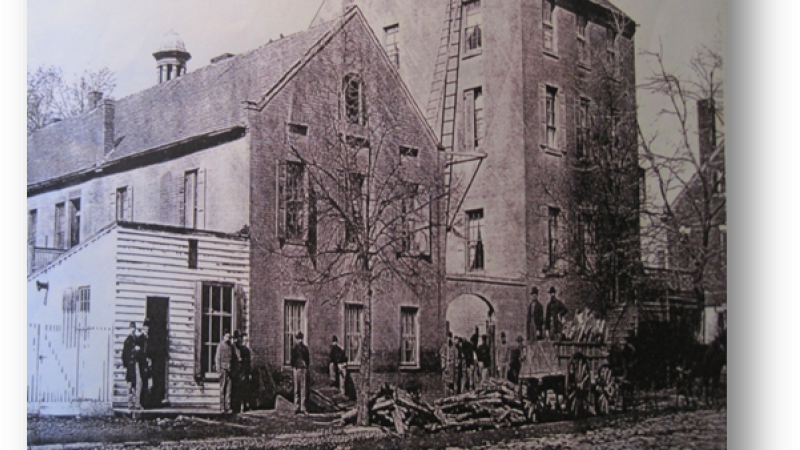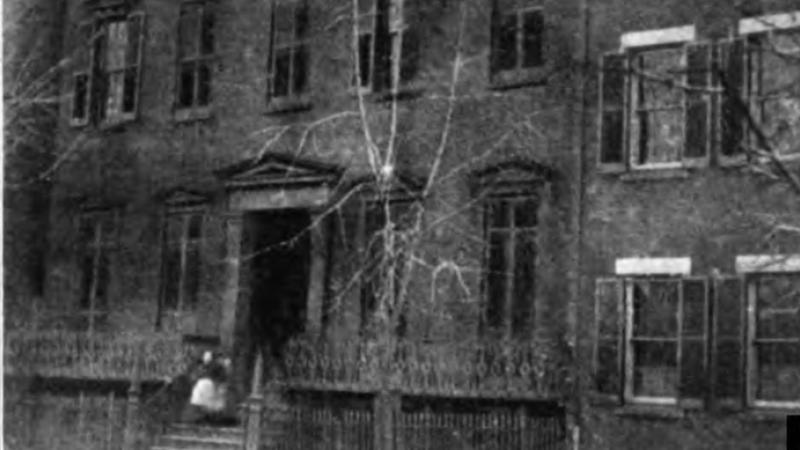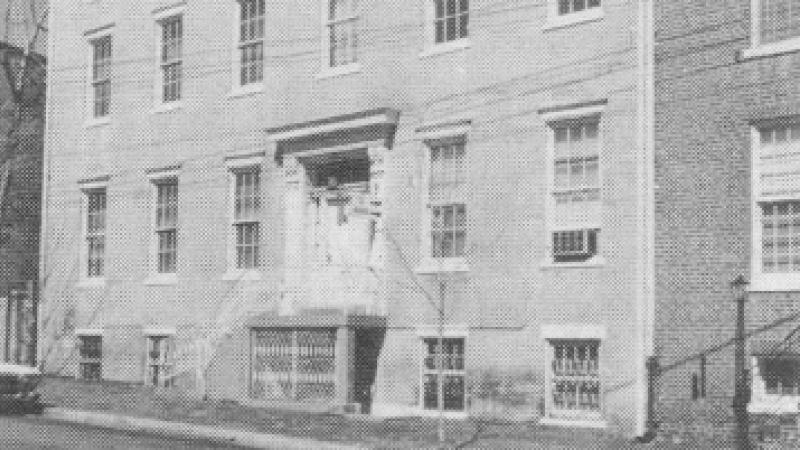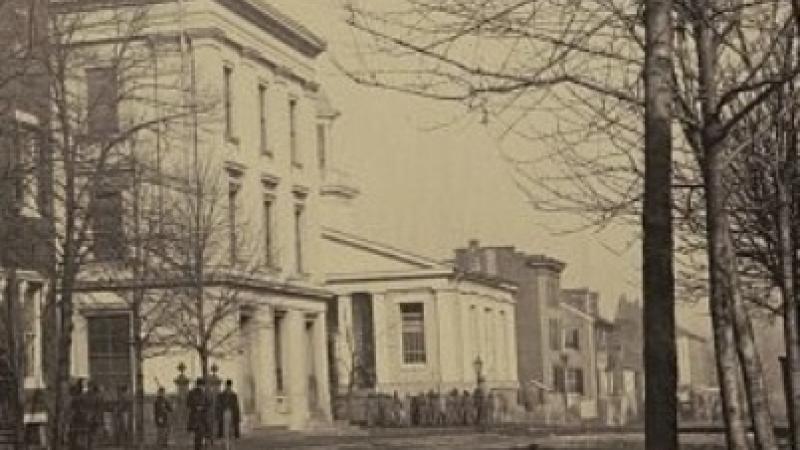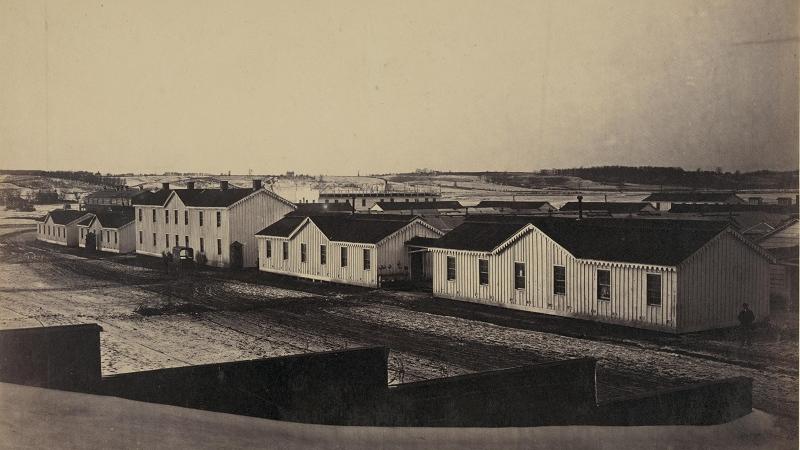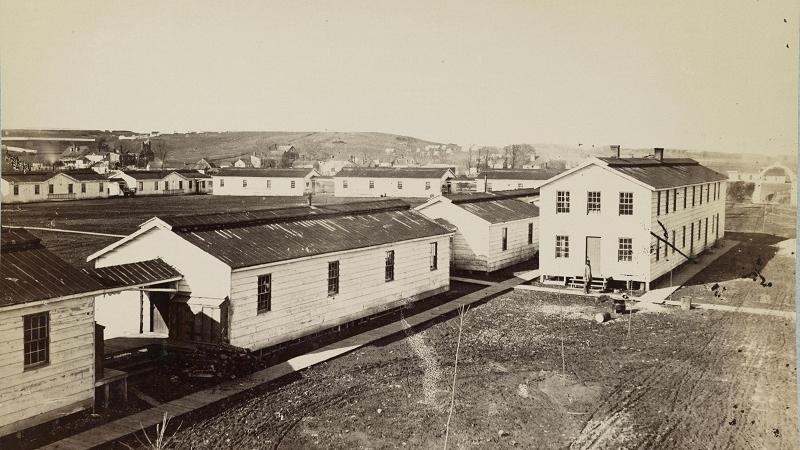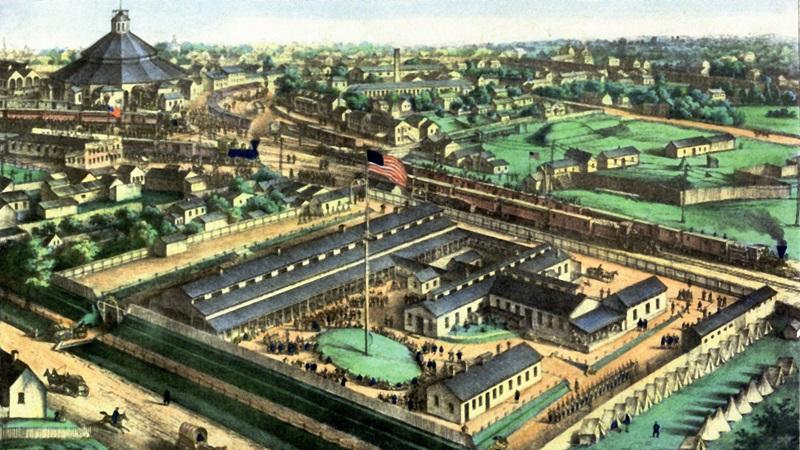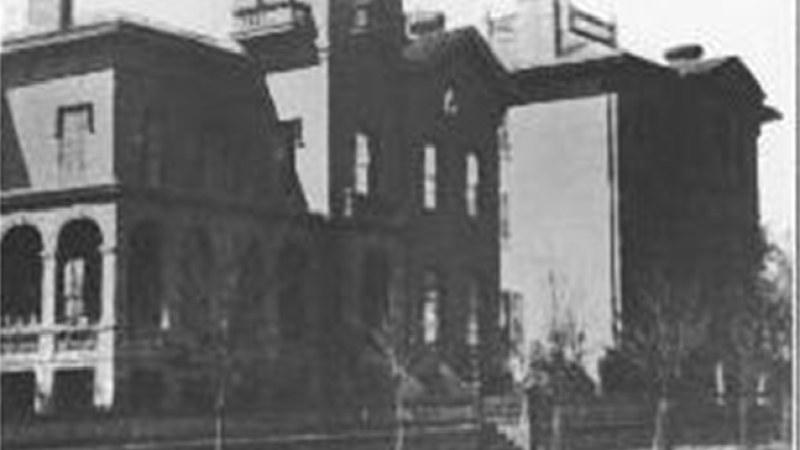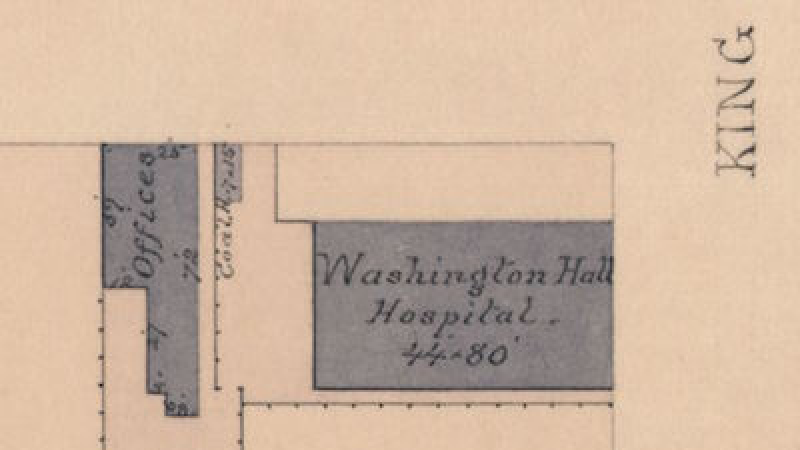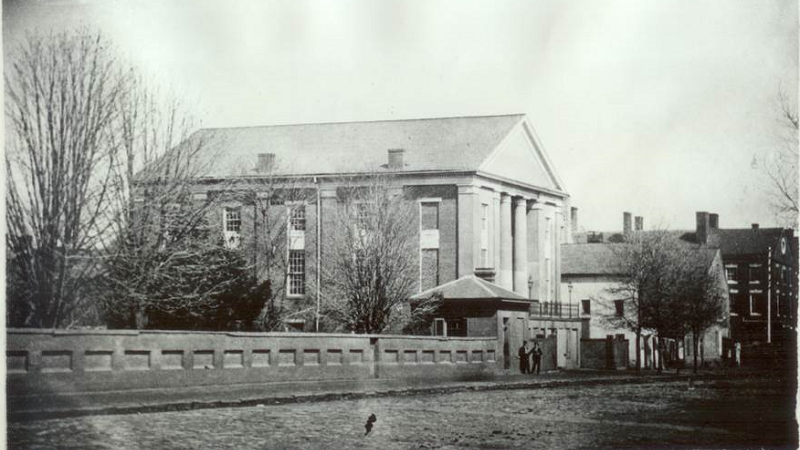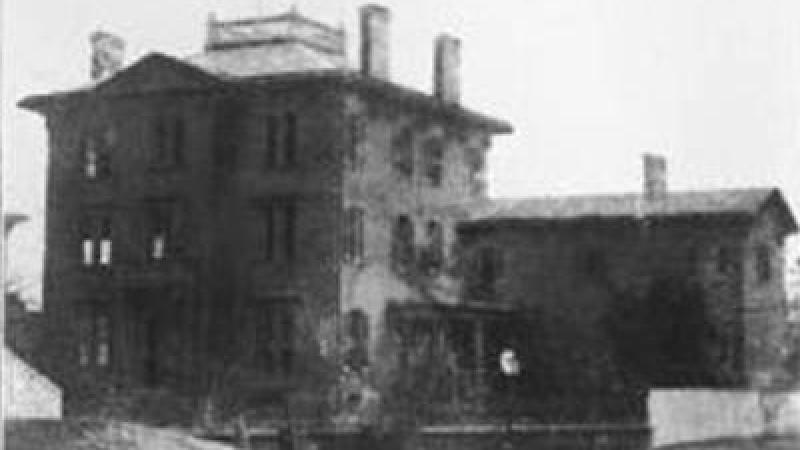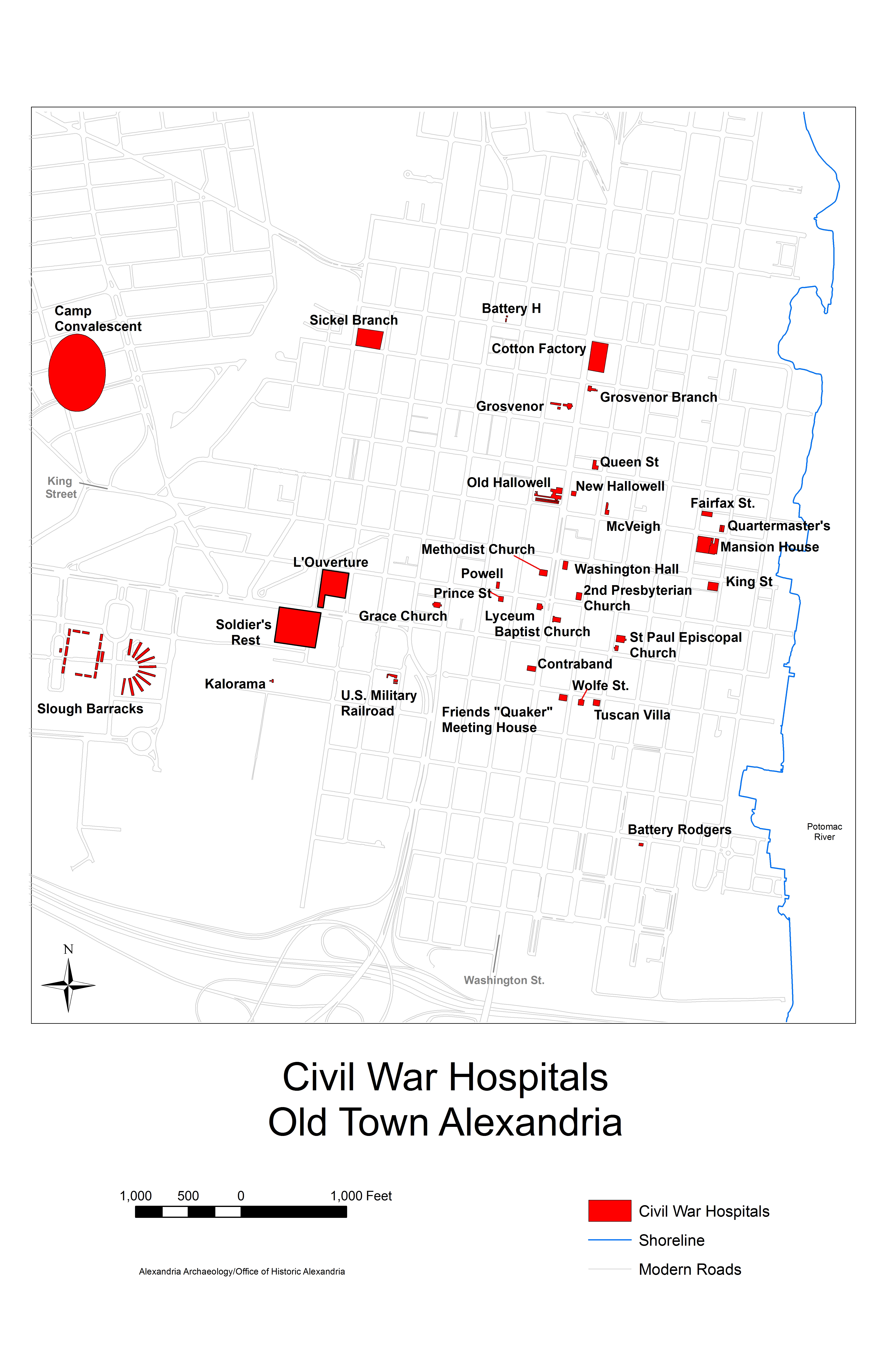
Union Hospitals in Alexandria
Union Hospitals in Alexandria, Virginia

The Union Army occupied Alexandria from the first days of the Civil War to the last. They used the town as a base for supplies, troop transfer, and other logistics, as well as to protect Washington, DC. Alexandria also became an important center for care of the wounded and sick. By the end of the war, more than 30 military hospitals were located in Alexandria, with 6,500 beds.
Churches, homes, the city’s largest hotel, and other buildings were taken over as medical facilities. A Quaker Meetinghouse, a girls’ seminary, a home belonging to the family of Robert E. Lee – all accommodated wounded and diseased patients. Elsewhere, hospital complexes extending over city blocks were built based on plans drawn up by the Quartermaster-General in Washington. Their main features were long, ventilated barracks (usually made of wood) in which patients could be divided into wards.
Surgeons, nurses, orderlies, cooks, and ambulance drivers also came to Alexandria to tend to the patients. Relief workers, volunteers, and worried family members flocked to the hospitals as well.
Little evidence remains of these hospitals. The purpose-built hospitals were dismantled, and many of the confiscated buildings were torn down or substantially changed. We know where most of the hospitals were located, based on the maps drawn up by the Quartermaster Corps and newspapers and other contemporary accounts.
The first general hospital organized under the Surgeon General opened in July 1861, in the Old Hallowell School. It soon became clear that many more facilities were needed in Alexandria, Washington, and Georgetown. The quartermaster in charge for a good part of the war, Capt. J.G.C. Lee, recalled in 1901 “By rail at first, and afterward by steam boat, they [the wounded] poured in. The first telegram received by me from the commanding general read, ‘Send to the front three carloads of ice. Prepare to care for ten thousand wounded.’”
In September 1862, the hospital system was organized by Division. (The Army of the Potomac, which fought mostly on the East Coast, was organized into three divisions.) Each division had a primary general hospital, with other nearby buildings as its branches. Officially, the branches were considered wards and were numbered off of their main hospital, but had names in popular usage. In addition to the Division hospitals, some specialized hospitals added an unknown, but relatively small number of beds to the total the city could accommodate.
On Christmas Eve 1862, Julia Wilbur, a Quaker woman from upstate New York who came to Alexandria as a Freedmen’s aid worker, wrote in a letter to Anna Barnes:
“You at a distance cannot image what a place this is at present. It was last Friday that 700 wounded were brought here. All day long the ambulances were busy in moving them from the boats to the hospitals. A great many slightly wounded were able to walk & will soon be well. In one hos[pital] I saw one ward filled up. Their wounds had been well dressed & they said they were well cared, they have plenty of blankets, & they were moved just as carefully as could be & laid on those clean white beds as tenderly as it c[oul]d have been done at home….Among all those wounded, suffering men, I heard not a groan nor a complaint.”
Letter from Julia Wilbur to Anna Barnes December 22-24, 1862. From the Rochester Ladies’ Anti-Slavery Society Papers, 1851-1868, William L. Clements Library, the University of Michigan.
- Civil War Hospitals Map
- Diaries of Julia Wilbur, March 1860 to July 1866. Transcribed by Alexandria Archaeology, 2013-2014, from the originals in the Quaker Collection, Haverford College, PA. Julia Wilbur, a relief worker from Rochester, NY, came to Alexandria during the Civil War. She kept a detailed diary from the 1840s through her death in 1895. Alexandria Archaeology's transcriptions focus on the period right before, during, and after the War.
- Alexandria During the Civil War
- Alexandria During the Civil War: First Person Accounts
The Union Hospitals
For each of the 28 Union hospitals, read a short history, view historic photos and Quartermaster Maps, and learn about the site today. Tour the Hospital Sites with this Walking Tour Brochure.
